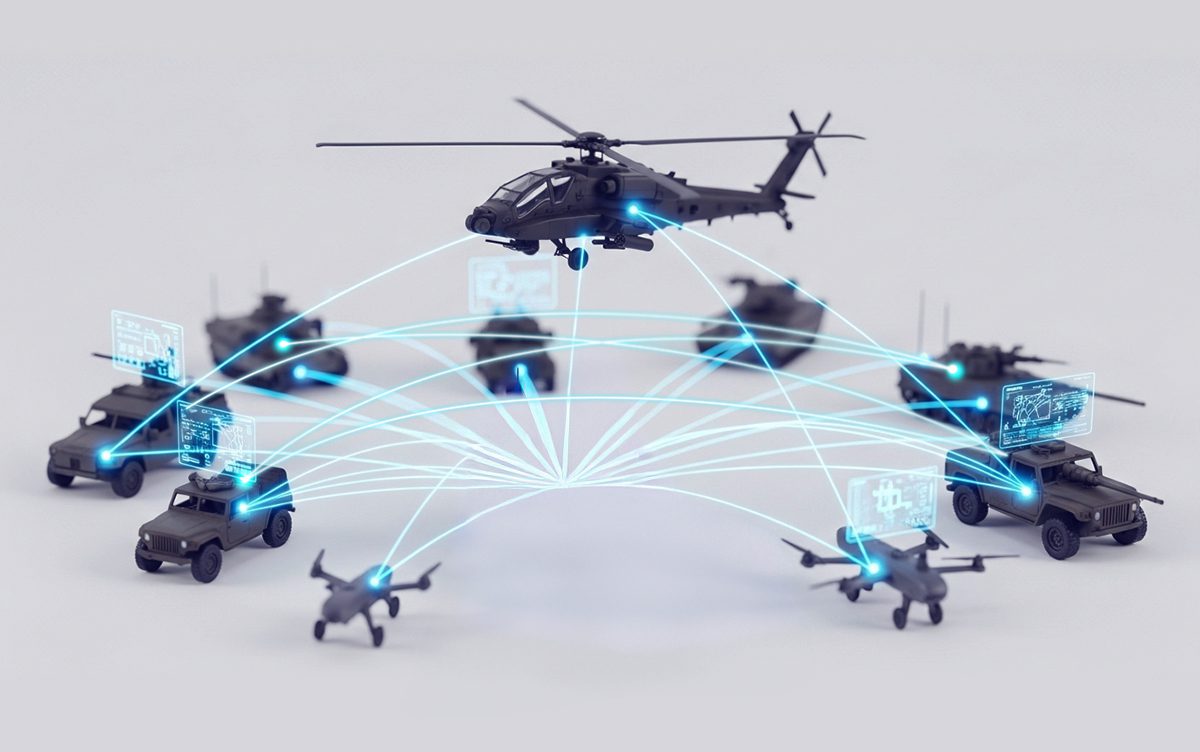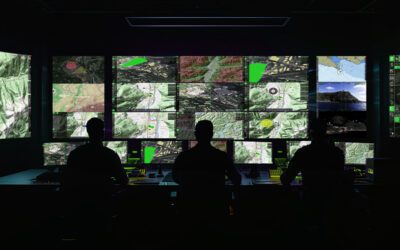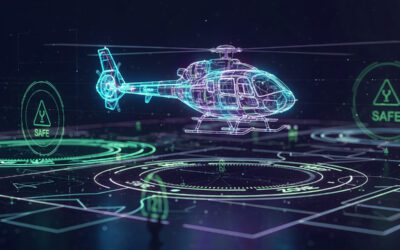C4ISR is the cornerstone of modern battlefield tactics and military operations. We all understand the importance of high-quality intelligence gathered through surveillance and reconnaissance. However, without the 4C element, this framework fails to deliver effective results, resulting in chaotic and disorderly operations. Units are unable to communicate with one another, and the worst-case scenario could result in ‘friendly fire’ incidents that can cost lives.
C4ISR systems bring into line the essential elements of Command, Control, Communications, and Computers, synchronising them with solid intelligence, surveillance, and reconnaissance. Without C4ISR systems, modern military operations are subject to poor decision-making, breakdowns in communication, and ultimately, operational failure.
As technology advances, one element in particular – Computers – becomes increasingly important. In this article, we’ll take a more in-depth look at the key benefits of an effective modern C4ISR system and how technological advancements such as mission console systems and battlefield cyber-technology are advancing the principles of an effective network approach. We’ll examine who benefits most from integrated C4ISR systems and what the future may hold, particularly the introduction of AI and AR in both manned and unmanned aerial platforms. We’ll also introduce the innovative FlySight OPENSIGHT Mission Console as an effective delivery method and an essential element in the modern concept of C4ISR in the military.
An introduction to C4ISR
With an effective C4ISR framework in place, military commanders can achieve overall operational dominance, thanks to the integrated nature of modern C4ISR systems. Before examining the overall benefits, let’s take a closer look at each element and how it compares to traditional siloed systems.
The key point to remember about C4ISR is that no single element is more important than the others. This is a holistic, synergised approach to battlefield tactics, with each section fitting into the matrix with equal parity.
Command – The foundation of military leadership and the key to successful operational procedure is Command. This element focuses on setting objectives, both primary and secondary, and ensuring that units in the field have a clear understanding of their role. Command decisions are based on accurate intel gathered through surveillance and reconnaissance. This intel is then analysed and passed to commanders, improving their situational awareness even when well away from the front line. The role of Command is to establish a clear mission vision, identifying the priorities and intent.
Control – Once the command intent is established and the mission parameters set, Control’s function is to then ensure the appropriate orders are assigned and the operation remains aligned with the original purpose, even if the parameters change as a result of revised intelligence. The ‘Chain of Command’ is established via Control, and auxiliary units supporting the operational personnel assigned roles within the mission parameters. Effective control is vital for the success of any mission, as it helps keep the process on track. It is, however, one of the more flexible and complex elements of the equation.
Communications – Without effective and accurate communication between command centres and individual units, a military operation is doomed to failure. In a worst-case scenario, poor communications can cost lives. Whether it’s encrypted radio signals, satellite links that download information from the Cloud or direct verbal communications, connectivity has to be maintained at all times. In addition to voice commands, other information, such as data (primarily that gathered during surveillance and reconnaissance missions), and video, must be transferred quickly and effectively with no degradation. Efficient situational awareness and a rapid response to changing situations depend on good comms.
Computers – Field radios are a thing of the past. Now, computers comprise one of the four C4 elements of C4ISR systems, and their role in modern warfare cannot be overstated. With vast amounts of data being processed, analysed and stored, new developments such as Cloud-based storage and AI systems that can help human operators sift through the data with greater speed and no compromise on accuracy are placing the emphasis on next-generation computing. This includes Mission Consoles, such as FlySight’s OPENSIGHT, which can link directly to command centre computers and update mission intel in real-time, providing operational advantages and greater situational awareness.
Intelligence, Surveillance and Reconnaissance – If you want to defeat an enemy, you need intelligence. This single word forms the basis of all operations, encompassing human, signals, and, in the modern age, imagery intelligence. This latter source can be a result of satellite imagery and aerial photography, most commonly gathered in the 21st century by drones. Longer-term surveillance and continuous monitoring can create a more complex picture of the target areas, including features that may be missed.
Reconnaissance zeros in on the finer details from enemy positions and potential threats to terrain issues, particularly in more remote regions. These three essential elements create the final pieces of C4ISR in the modern military theatre, whether that’s at sea or on land.
The core benefits of C4ISR systems
As technological developments have transformed the battlefield landscape, C4ISR has evolved into a multifaceted tool that seamlessly integrates with both existing and emerging hardware. Training and the use of modern mission consoles are making Army C4ISR and airborne units, in particular, far more efficient. Navy C4ISR may encounter different terrain, but the principles remain the same, with the same types of advantages and core benefits. These include:
The enablement of real-time fusion of multi-source data. The data can be used to enhance situational awareness and be distributed instantly among decision-making support teams.
Advanced interoperability between ISR platforms, teams and hardware/software – The introduction of computer and satellite communications, as well as machine learning and AI, means that the interoperability between both humans and the hardware and software they use is far more advantageous. Instant communication is now possible between Command and operational units, particularly airborne units such as helicopters and drones. Platforms such as OPENSIGHT also include modules that can improve everything from visibility to target acquisition.
The ability to see real-time geospatial visualisation data – Old data is useless, especially in a highly fluid situation. Being able to view real-time geospatial data is a significant benefit, as it enables mission parameters to be adjusted quickly. This flexibility allows missions to be more responsive without requiring units to abandon the established chain of command.
Advanced UI/UX features and smart management of information flows – User interfaces are easily adapted to accommodate modern, modular mission console software, ensuring a hassle-free and intuitive user experience. Because existing hardware can be requisitioned to run C4ISR systems, those using them in the field are already familiar with the technology. This reduces training time, allowing these systems to be deployed more quickly and effectively. This, in turn, allows for smarter management of information flows in both directions, and a reduced chance of commands being misinterpreted or data giving a wrong impression of a theatre.
Cloud-based and edge computing support – The sheer volume of data being gathered through surveillance and reconnaissance missions can be colossal. Storing and analysing this data is a monumental task, which is where Cloud-based and edge computing support comes in. Cloud data storage enables the collection, storage, and distribution of vast amounts of information from anywhere in the world, while edge computing allows devices to generate local data that can be analysed and acted upon immediately – a key advantage in highly fluid situations.
AI and machine learning for intelligence processing – Modern intelligence collection generates enormous amounts of data that needs to be processed, particularly when you include all sources such as satellite feeds and UAV data integration. AI is the ideal ‘assistant’ to human operators, as it can use machine learning and complex algorithms to identify relevant information from the ‘background noise’. While the amount of data AI can process is vast, the final decision will always lie with a human operator. AI is a tool, not an alternative, and should be considered as a highly effective C4ISR element in the modern military.
Who can benefit from integrate C4ISR system?
Everyone, particularly joint operations and coalition mission coordination teams, can benefit from a unified C4ISR system. Rather than trying to gather intelligence from multiple sources and then having to piece together the separate analysis reports, a cohesive CRISR methodology short-cuts all the usual issues of misinterpretation, lost data, and even conflicting intelligence reports to deliver a clear, compelling, and mission-critical service. C4ISR is already demonstrating its effectiveness in various operations, including NATO Interoperability Initiatives, JADC2 Programs, and Tactical Edge Operations. It is also particularly effective in urban combat and electronic warfare environments, where the advanced nature of the technology matches and exceeds those used by hostile forces.
The future of C4ISR systems in the military operations
C4ISR in the military is now an integral part of battlefield operations. However, with the advent of more advanced systems, such as AI and Enhanced Reality, these systems will continue to advance battlefield dominance for years to come. Systems such as the innovative FlySight OPENSIGHT Mission Console platform represent the leading edge of C4ISR compatibility, bringing the advantages of Augmented or Enhanced Reality and AI to the table.
Features such as Automatic Target Recognition, dehazing for clearer images, and a host of geospatial positioning sensors and multi-spectral optics make FLYSIGHT the ideal partner for airborne reconnaissance and intelligence gathering. With instant access to the information through edge computing and the assistance of AR and AI to crunch the intelligence, responses to fast-moving scenarios can be more proactive and faster, more targeted and, ultimately, more successful.
You can find out more information about OPENSIGHT by downloading our brochure here. Or get in touch to find out more about the OPENSIGHT Mission Software and its C4ISR capabilities.




